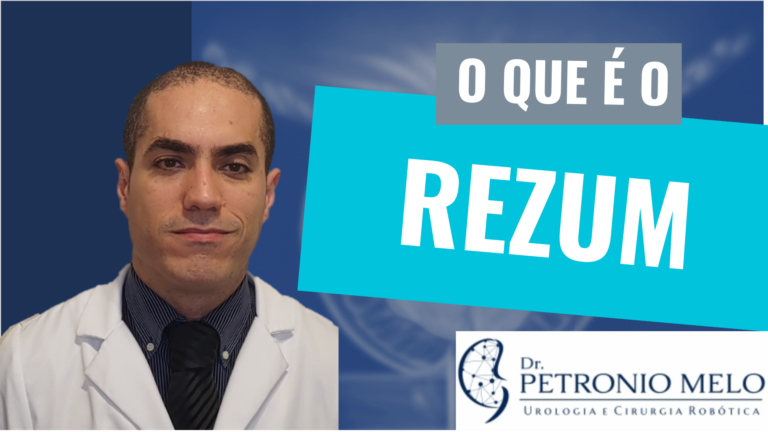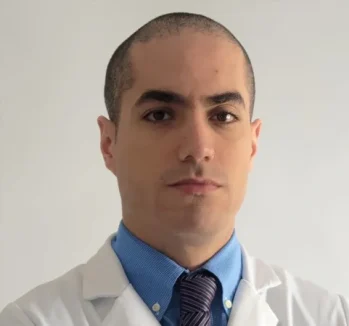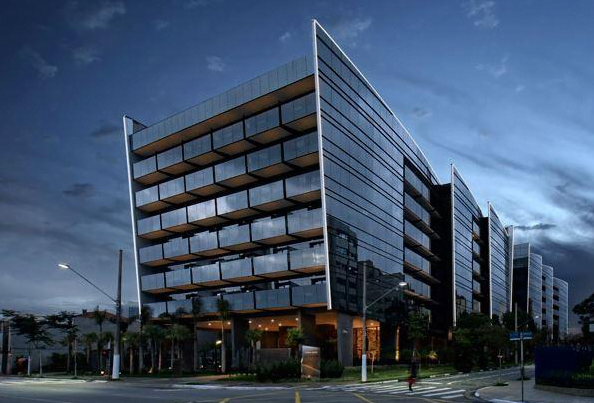Rezum is a treatment modality for an enlarged prostate (benign prostatic hyperplasia – BPH) that uses water vapor as an energy source. Scientific studies have shown good results for improving urinary symptoms in patients without impairing sexual function.
What is Rezum? – New Treatment for Enlarged Prostate
An enlarged prostate (benign prostatic hyperplasia – BPH) is a very common problem that affects most men as they age. 40% of men in their 50s and 90% of men over 90 have an enlarged prostate.
In a large number of patients with an enlarged prostate, obstruction of the urinary flow occurs, which generates symptoms such as a weak stream, straining to urinate, a feeling of urgency, urinary incontinence, patients waking up many times at night to urinate (nocturia), among other symptoms.
These symptoms together are called LUTS ( lower urinary tract symptoms ). These LUTS have a significant impact on the quality of life of patients, and generally, the larger the prostate, the greater the chance of these symptoms impacting the patient’s life.
Current treatment for the symptoms caused by an enlarged prostate includes conservative approaches such as observation-only and lifestyle changes, medications, and surgical interventions. However, drug treatment may produce unsatisfactory relief of symptoms. In addition, the medications used for BPH may be associated with side effects such as postural hypotension, weakness and, mainly, worsened sexual performance.
Surgical treatment remains the most effective treatment for the symptoms generated by an enlarged prostate. While there are several options currently available, including Holmium laser enucleation of the prostate (HoLEP), UroLift and prostatic embolization, transurethral resection (TUR) of the prostate is still considered the gold standard treatment, the popular prostate scraping.
However, even TUR has its limitations, which include complications and a retreatment rate of 1–2% per year. Complications of prostate TURP include retrograde ejaculation (65%), erectile dysfunction (10%), urethral stricture (7%), urinary tract infection (UTI) (4%), bleeding requiring transfusion (2%) and incontinence urine (2%). In addition, it requires the use of general anesthesia or spinal anesthesia and entails an average hospital stay of 2 days.
Several minimally invasive procedures have been constantly being developed as alternatives for prostate TURP. Among them is the Rezum system (Boston Scientific, Marlborough, Massachusetts, USA), which has gained increasing attention since it received approval from the United States Food and Drug Administration (FDA) in 2015 and by the National Health Surveillance Agency (ANVISA) from Brazil in 2022.
How the Rezum System Procedure is Performed
Unlike other minimally invasive procedures that use conductive heat transfer, such as transurethral needle ablation or transurethral microwave therapy, the mechanism of action of the Rezum system uses the principles of convective heat transfer, exploiting the thermodynamic properties from water. The system has a radiofrequency generator and a single-use transurethral delivery device that incorporates a standard 4mm, 30-degree cystoscopy lens.
With the patient in the lithotomy position, a radiofrequency current is applied to an inductive coil heater, producing thermal energy in the form of water vapour. Water vapor is delivered via a retractable steam needle through emitter holes in the transurethral device. This is done in 9-second bursts in the transition zone of the prostate, where, by convection, it spreads evenly throughout the target tissue. The depth of penetration of the needle is approximately 10 mm.
Upon contact with the fabric at body temperature, the water vapor condenses. This phase shift to a liquid state releases concentrated energy into target tissue cell membranes, triggering instantaneous cell necrosis. Overlapping injection sites can be established with repeated applications to fully target areas of hypertrophy. Saline irrigation is used both to cool the urethra and to promote visualization.
The effectiveness of the Rezum treatment was evaluated with gadolinium-enhanced magnetic resonance imaging and histological testing after the procedure. Both tests demonstrated that the Rezum system is successful in producing necrosis in the target cell tissue while preserving the untreated tissue surrounding the area as the thermal energy is contained within the zonal boundaries of the prostate.
The mean reduction in total prostate volume at 6 months after the procedure was 28.9%.
The procedure can be performed with local anesthesia only, or with local anesthesia associated with sedation, depending on the case and the patient’s choice.
Results of scientific work on Rezum
Since the approval of Rezum by the US FDA in 2015, several studies have been published.
The main study is a randomized controlled trial (RCT) published in 2018 by McVary et al (McVary KT, Rogers T, Roehrborn CG. Rezūm Water Vapor Thermal Therapy for Lower Urinary Tract Symptoms Associated With Benign Prostatic Hyperplasia: 4-Year Results From Randomized Controlled Study. Urology. 2019 Apr;126:171-179. doi: 10.1016/j.urology.2018.12.041. Epub 2019 Jan 21. PMID: 30677455.).
In that work published by McVary involving 188 patients followed for 4 years, there was an improvement in lower urinary tract symptoms in less than 3 months after treatment with Rezum and this improvement remained throughout these 4 years (improvement in the International Prostate Symptom Score (IPSS ) in 47%, improvement in the quality of life index in 43%, improvement in the maximum flow in the uroflowmetry (Qmax) of 50%).
At the time of the study, the rate of surgical retreatment was 4.4% in 4 years. No disturbances in the sexual function of the patients were reported. These results showed that minimally invasive thermal therapy with Rezum provided effective symptom relief and improved quality of life that was maintained for over 4 years.
In general, scientific papers on Rezum have shown improvement in urinary symptoms from 1 month after the procedure and no case of ejaculatory dysfunction has been reported in any of the selected studies. A strength of convective water vapor thermal therapy, therefore, appears to lie in its ability to preserve patients’ sexual function and ejaculation.
Retreatment need rates vary between 3% and 5%.
Advantages and Disadvantages of Rezum
Treatment for enlarged prostate with Rezum has several advantages.
First, it has been shown to provide substantial and prolonged relief of urinary symptoms.
Furthermore, this improvement in LUTS and urinary flow occurs without affecting the erection and ejaculatory function typically associated with prostate TURP and other surgical procedures performed for an enlarged prostate. There were no new cases of ejaculatory dysfunction reported in the main papers on Rezum.
Another significant benefit is that it can be performed as an outpatient procedure. It has predominantly been performed under sedation, eliminating the need for general anesthesia.
Rezum is also a quick procedure (average 8 minutes), reducing the risk that adverse events may occur, while maximizing the number of procedures that can be performed.
In contrast to many other new therapies for an enlarged prostate, Rezum is able to target and treat the middle lobe of the prostate. In theory, there are no anatomical restrictions for Rezum and, in the future, it is hoped that there will be evidence to support its application in very large prostates. The current recommended limit regarding prostate size is 120 grams.
The Rezum system has many strengths that support its use. Despite this, it is not a procedure without disadvantages. A significant benefit of prostate TURP is that it can eventually lead to the incidental identification of prostate cancer, with positive detection in 4.1% – 16.7% of prostate TURP samples.
In contrast, Rezum does not collect tissue samples, so it does not have the ability to determine the presence of prostate cancer.
As with all surgical procedures, patient selection is critical. Not all patients with BPH are candidates for Rezum therapy. However, in contrast to some other procedures, patients with medial lobe obstruction are eligible to receive Rezum therapy.
It is not a procedure indicated for patients with a very large prostate (over 120 grams) and patients with urinary retention and a history of recurrent urinary infections. Rezum is also not indicated for patients who have had a previous invasive procedure or radiotherapy to the prostate.
Another disadvantage is that most patients need to use a bladder catheter after the procedure.
Complications
The majority of complications reported due to Rezum were mild (Clavien classification I and II). The most common adverse events are burning to urinate (dysuria), blood in the urine (hematuria), blood in the sperm (hematospermia), symptoms of urgency and urinary tract infection. These symptoms usually disappear within a few weeks. There were no complications reported at mid-term follow-up and no reports of erectile dysfunction.
However, data analyzed by scientific papers show that some more serious complications may eventually occur, although they are rarer. Some major complications include severe LUTS after surgery requiring prostate TURP, and also severe urinary tract infection (urosepsis).
Conclusion
The Rezum procedure is a new minimally invasive therapy for the treatment of enlarged prostate. To date, data from available studies point to good clinical outcomes with low short-term risk of complications. Its application has demonstrated clinical efficacy and has specific benefits that distinguish it from other treatments.
It is applicable in an outpatient setting, is effective in preserving sexual function, and is versatile in its ability to treat a variety of prostate morphologies.




